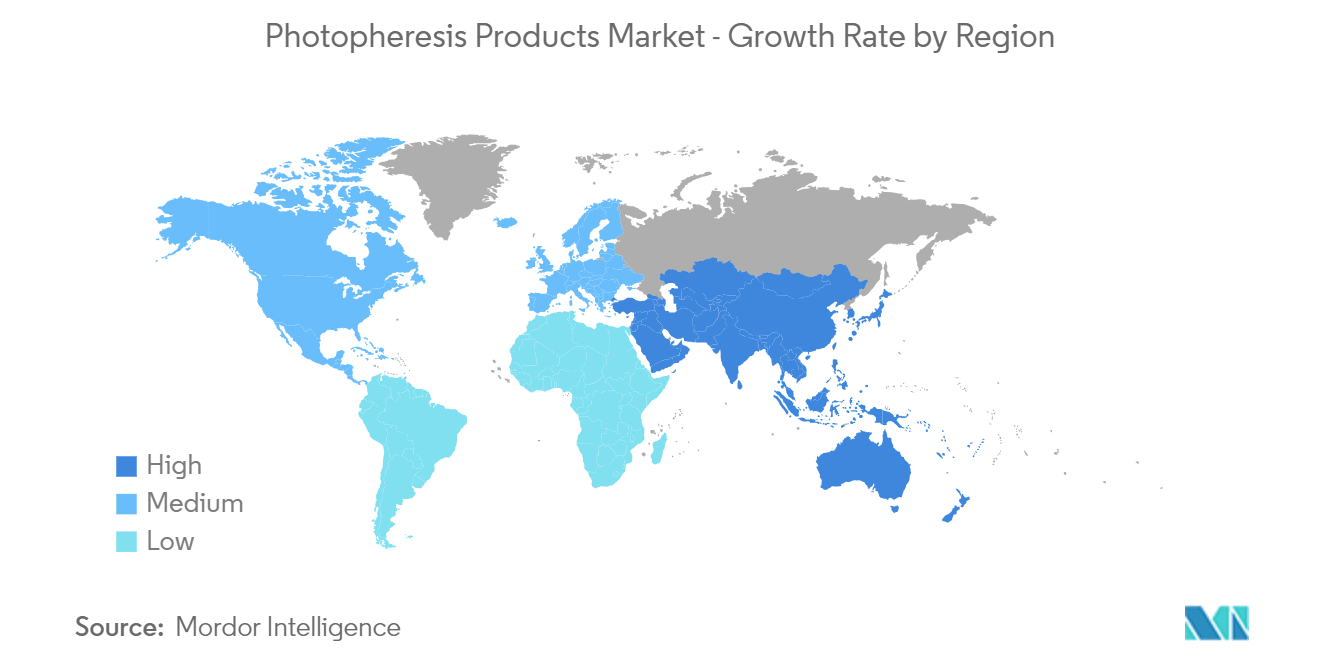Market Trends of Photopheresis Products Industry
Chronic Graft Versus Host Disease (GvHD) is Expected to Hold a Significant Market Share in the Market Studied.
Chronic graft-versus-host disease (GvHD) is a systemic disorder that happens when the graft's immune cells recognize the host as foreign and attack the recipient's body cells. It is a common complication after an allogeneic hematopoietic stem cell transplant (HCT). In GvHD, the recipient's body is attacked by the donated bone marrow or peripheral blood stem cells as they perceive it as foreign.
Extracorporeal photopheresis (ECP) remains one of the subsequent therapeutic choices in the treatment of GvHD, which is expected to drive market growth. According to a study published in Medicine in November 2022, with an overall response rate ranging from 31% to 93% and the maximum efficacy reported for individuals with skin involvement, ECP's effectiveness in treating cGVHD was well-documented. Photopheresis is particularly effective in treating conditions like graft-versus-host disease (GVHD) in stem cell transplants and chronic rejection in solid organ transplants. GVHD occurs when the transplanted immune cells attack the recipient's tissues, and photopheresis can suppress this harmful immune response, which is expected to boost the segment’s growth.
It should be noted that prolonged ECP is typically required for a clear visual result. In addition, according to the study published in the American Society for Transplantation and Cellular Therapy in November 2022, ECP was recognized as an effective immunomodulatory therapy with mild adverse events in GvHD. Such advantages and effectiveness of photopheresis in GvHD are expected to increase its adoption, driving the segment’s growth.
Rising initiatives from the national governments for the implementation of ECP for GvHD are expected to bolster the segment’s growth over the forecast period. For instance, in March 2022, the government of Australia passed a regulation for initial ECP treatment, and continuing ECP treatment was introduced for patients with GvHD following allogeneic hematopoietic stem cell transplantation. Such initiatives are expected to increase the adoption of ECP in GvHD, driving the segment’s growth.
Therefore, the government's rising initiatives and the importance of photopheresis in GvHD are the factors expected to drive the segment’s growth.

North America Holds a Significant Share and Expected to do the Same During the Forecast Period
The factors driving the market in North America include rising organ donations, a strong foothold and rising initiatives of the key market players, and developed healthcare infrastructure.
As the number of organ transplants increases worldwide due to advancements in medical technology and increased donor availability, the demand for supportive therapies like photopheresis also rises. This is because transplant recipients require ongoing management to prevent rejection and maintain the health of the transplanted organ. For instance, according to the Canadian Institute of Health Information, in June 2024, a total of 3,428 organ transplants were performed in Canada in 2023; 83% of transplants used deceased donor organs, and 17% used living donor organs. Such organ transplantations are expected to drive market growth in the region due to the increased adoption of photopheresis products to overcome organ transplant rejection.
Furthermore, rising initiatives from key market players are also expected to drive market growth in the region. For instance, in July 2021, Terumo Blood and Cell Technologies launched a direct offering for physicians to perform extracorporeal photopheresis immunotherapy (ECP) procedures at the patient's bedside.
Terumo Blood and Cell Technologies is a medical technology company that specializes in a portfolio of products, software, and services for blood collection, therapeutic apheresis, and cellular technologies. Such an initiative is expected to increase the adoption of photopheresis products in blood collection and processing, driving market growth.
Moreover, the presence of blood processing centers and advanced apheresis are also some of the main factors ensuring the dominance of the region. Therefore, factors such as rising organ transplantation and rising initiatives from the key market players are expected to drive market growth in the region.


